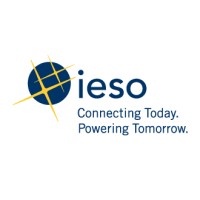Grants and Funding for Indigenous Businesses in Canada for 2026
Unlock funding opportunities with top Indigenous business grants.
Indigenous business grants provide funding for growth and innovation. They help entrepreneurs launch, expand, and succeed in various industries.

Capital project: Community Energy Systems
Green Municipal Fund (GMF)- Maximum amount : 10,000,000 $
- Up to 80% of project cost
- Utilities
- Construction
- Administrative and support, waste management and remediation services
- Public administration

Green Industrial Facilities and Manufacturing Program (GIFMP) — Industrial Facility Track
Natural Resources Canada (NRCan)- Minimum amount : 40,000 $
- Up to 50% of project cost
- Manufacturing

AI Compute Access Fund
Innovation, Science and Economic Development Canada (ISED)- From $67,000 to $3,350,000
- Up to 67% of project cost
- All industries

Green Freight Program — Assess and Retrofit
Natural Resources Canada (NRCan)- Maximum amount : 250,000 $
- Up to 75% of project cost
- Transportation and warehousing

AgriScience Program – Clusters
Agriculture and Agri-Food Canada (AAFC)- From $5,000,000 to $15,000,000
- Up to 70% of project cost
- Agriculture, forestry, fishing and hunting
Discover how much grant funding is available for your business
Subsidize your projects with grants!
Use our free grant estimator to quickly identify the available grant amounts for which your company may be eligible.

International Single Sport Events - Hosting Program
Canadian Heritage- No Condition
- Arts, entertainment and recreation

Canada Public Transit Fund
Housing, Infrastructure and Communities Canada- No Condition
- Construction
- Transportation and warehousing
- Public administration

Creative Export Canada (CEC) — Export-Ready Stream
Canadian Heritage- Maximum amount : 2,500,000 $
- Up to 75% of project cost
- Information and cultural industries
- Arts, entertainment and recreation

NovaScience Program - Support for projects in scientific culture and innovation
Gouvernement du Québec- Maximum amount : 200,000 $
- Up to 80% of project cost
- Information and cultural industries
- Professional, scientific and technical services
- Educational services

Green Freight Program — Repower and Replace
Natural Resources Canada (NRCan)- Maximum amount : 5,000,000 $
- Up to 50% of project cost
- Transportation and warehousing
Access over 4000 different funding opportunities
Try the helloDarwin platform today and find programs that fit your needs
The helloDarwin application makes it easy to unlock grants so your business can grow faster—with less hassle and more impact.

Explore and Create — Concept to Realization
Canada Council for the Arts (CCA)- Maximum amount : 100,000 $
- Arts, entertainment and recreation

First Nations Community Building Retrofit Program
Independent Electricity System Operator (IESO)- Maximum amount : 330,000 $
- Utilities
- Public administration

APCHQ — Get financing through the Canada Greener Affordable Housing program: Retrofit Funding for multi-unit residential buildings
Association des professionnels de la construction et de l’habitation du Québec (APCHQ)- Maximum amount : 170,000 $
- Up to 80% of project cost
- Real estate and rental and leasing

Canada Service Corps – Service Placements Regional Stream
Employment and Social Development Canada (ESDC)- Maximum amount : 3,000,000 $
- Educational services
- Health care and social assistance
- Arts, entertainment and recreation
- Other services (except public administration)

International outreach — Travel
Canada Council for the Arts (CCA)- Maximum amount : 30,000 $
- Arts, entertainment and recreation
Download the official 2026 grants guide
Access key insights to maximize your grant funding opportunities
Understand the different funding programs and find the best options for your business.

Creative Export Canada (CEC) — Export Development Stream (EDS)
Canadian Heritage- From $15,000 to $90,000
- Up to 75% of project cost
- Arts, entertainment and recreation

Program Supporting the Development of Tourist Attractions — Stream 2
Investissement Québec (IQ)- From $100,000 to $5,000,000
- Up to 50% of project cost
- Accommodation and food services

Active Transportation Fund
Housing, Infrastructure and Communities Canada- Maximum amount : 50,000,000 $
- Transportation and warehousing
- Educational services
- Health care and social assistance
- Arts, entertainment and recreation

Program Supporting the Development of Tourist Attractions — Stream 1
Investissement Québec (IQ)- From $150,000 to $5,000,000
- Up to 50% of project cost
- Arts, entertainment and recreation
- Accommodation and food services

Equality for Sex, Sexual Orientation, Gender Identity and Expression Program
Women and Gender Equality Canada- No Condition
- Educational services
- Health care and social assistance
- Other services (except public administration)
- Public administration
Find tailored funding for your business
Discover more grants on the helloDarwin platform
Look through over 4,000 grants, tax credits, loans and more financial aid on the helloDarwin application.

Crime Prevention Action Fund (CPAF)
Public Safety Canada (PSC)- Maximum amount : 7,500,000 $
- Up to 95% of project cost
- Educational services
- Health care and social assistance
- Other services (except public administration)
- Public administration

Sports Support Program - Community Sports for All Initiative
Canadian Heritage- No Condition
- Arts, entertainment and recreation

AgriAssurance Program – National Industry Association Component
Agriculture and Agri-Food Canada (AAFC)- Maximum amount : 1,000,000 $
- Up to 75% of project cost
- Agriculture, forestry, fishing and hunting

African Swine Fever Industry Preparedness Program (ASFIPP) - Welfare Slaughter and Disposal Stream
Agriculture and Agri-Food Canada (AAFC)- Maximum amount : 1,000,000 $
- Up to 85% of project cost
- Agriculture, forestry, fishing and hunting
- Manufacturing

AgriRisk Initiatives - Research and Development Contribution Funding
Agriculture and Agri-Food Canada (AAFC)- Maximum amount : 2,500,000 $
- Agriculture, forestry, fishing and hunting
Tired of scrolling through all these programs?
Filter grants relevant for your company on the helloDarwin platform
Sort over 4,000 business funds by your industry, projects and location with helloDarwin's free app.

AgriRisk Initiatives - Microgrants Funding
Agriculture and Agri-Food Canada (AAFC)- Maximum amount : 2,500,000 $
- Up to 85% of project cost
- Agriculture, forestry, fishing and hunting

REGI — Business Scale-up and Productivity (BSP) - Northern Ontario
Government of Canada- Maximum amount : 500,000 $
- Up to 50% of project cost
- Manufacturing
- Professional, scientific and technical services

Substance Use and Addictions Program (SUAP)
Health Canada- No Condition
- Educational services
- Health care and social assistance
- Other services (except public administration)
- Public administration

Humanitarian Workforce (HWF) - COVID-19 and other large-scale emergencies
Public Safety Canada (PSC)- Up to 100% of project cost
- Health care and social assistance
- Other services (except public administration)
- Public administration

AgriScience Program – Projects
Agriculture and Agri-Food Canada (AAFC)- Maximum amount : 5,000,000 $
- Up to 70% of project cost
- Agriculture, forestry, fishing and hunting
- Manufacturing
Discover how much grant funding is available for your business
Subsidize your projects with grants!
Use our free grant estimator to quickly identify the available grant amounts for which your company may be eligible.

Rail Safety Improvement Program (RSIP) - Research and Education Component
Transport Canada- Maximum amount : 1,000,000 $
- Up to 50% of project cost
- Transportation and warehousing
- Educational services
- Public administration

Enhanced Road Safety Transfer Payment Program (ERSTPP)
Transport Canada- Maximum amount : 10,000,000 $
- Up to 75% of project cost
- Transportation and warehousing
- Professional, scientific and technical services
- Educational services
- Other services (except public administration)

Age Well at Home (AWAH) - In-Home Support Pilot Project Stream
Employment and Social Development Canada (ESDC)- From $300,000 to $800,000
- Educational services
- Health care and social assistance
- Other services (except public administration)
- Public administration
Flood Resilience and Adaptation Program - Community Resilience and Relocation Component
Ministry of Municipal Affairs and Housing- No Condition
- Public administration

Canada Book Fund (CBF) — Support for Organizations — Internships
Canadian Heritage- Maximum amount : 22,500 $
- Up to 75% of project cost
- Information and cultural industries
Access over 4000 different funding opportunities
Try the helloDarwin platform today and find programs that fit your needs
The helloDarwin application makes it easy to unlock grants so your business can grow faster—with less hassle and more impact.

AgriInnovate Program
Agriculture and Agri-Food Canada (AAFC)- Maximum amount : 5,000,000 $
- Up to 60% of project cost
- Agriculture, forestry, fishing and hunting

Capitale-Productivity
Quebec City- Maximum amount : 150,000 $
- Up to 40% of project cost
- All industries

Arts Abroad — Residencies
Canada Council for the Arts (CCA)- Maximum amount : 20,000 $
- Information and cultural industries
- Arts, entertainment and recreation

Supporting Artistic Practice — Sector Innovation and Development
Canada Council for the Arts (CCA)- Maximum amount : 50,000 $
- Arts, entertainment and recreation

Engage and Sustain — Artistic Institutions
Canada Council for the Arts (CCA)- Up to 25% of project cost
- Arts, entertainment and recreation
Download the official 2026 grants guide
Access key insights to maximize your grant funding opportunities
Understand the different funding programs and find the best options for your business.

Arts Across Canada — Travel
Canada Council for the Arts (CCA)- Maximum amount : 30,000 $
- Arts, entertainment and recreation

Strategic Funds and Initiatives — Market Access Strategy
Canada Council for the Arts (CCA)- Maximum amount : 60,000 $
- Information and cultural industries
- Arts, entertainment and recreation

Green Industrial Facilities and Manufacturing Program — Energy Efficiency Solutions Track
Natural Resources Canada (NRCan)- Maximum amount : 20 $
- Up to 75% of project cost
- Manufacturing

Support program for the development of reserved designations and promotional terms — Component 1
Ministry of Agriculture, Fisheries and Food (MAPAQ)- Maximum amount : 150,000 $
- Up to 75% of project cost
- Agriculture, forestry, fishing and hunting

REGI — Business Scale-up and Productivity — CED (QC) – Private sector
Canada Economic Development for Quebec Regions (CED)- Up to 50% of project cost
- All industries
Find tailored funding for your business
Discover more grants on the helloDarwin platform
Look through over 4,000 grants, tax credits, loans and more financial aid on the helloDarwin application.

Canadian Agricultural Strategic Priorities Program
Agriculture and Agri-Food Canada (AAFC)- Maximum amount : 1,000,000 $
- Up to 50% of project cost
- Agriculture, forestry, fishing and hunting

Canada Nature Fund for Aquatic Species at Risk (CNFASAR)
Fisheries and Oceans Canada (DFO)- From $50,000 to $1,000,000
- Agriculture, forestry, fishing and hunting
- Professional, scientific and technical services
- Educational services
- Other services (except public administration)

BioTalent — Student Work Placement Program (SWPP)
BioTalent Canada- Maximum amount : 7,000 $
- Up to 70% of project cost
- Professional, scientific and technical services
- Educational services
- Health care and social assistance

Women Entrepreneurship Loan Fund
Innovation Canada- Maximum amount : 50,000 $
- All industries

Mitacs — Business Strategy Internship
Mitacs- Maximum amount : 10,000 $
- All industries
Tired of scrolling through all these programs?
Filter grants relevant for your company on the helloDarwin platform
Sort over 4,000 business funds by your industry, projects and location with helloDarwin's free app.

Arts Abroad — Circulation and Touring
Canada Council for the Arts (CCA)- Maximum amount : 200,000 $
- Up to 50% of project cost
- Arts, entertainment and recreation

JEDI — Indigenous Business Incubator Program
Joint Economic Development Initiative (JEDI)- No Condition
- All industries

TECHNATION — Career Ready Program
TECHNATION- Maximum amount : 7,000 $
- Up to 70% of project cost
- Agriculture, forestry, fishing and hunting
- Manufacturing
- Information and cultural industries
- Professional, scientific and technical services

CED — Regional Artificial Intelligence Initiative
Canada Economic Development for Quebec Regions (CED)- Up to 50% of project cost
- Agriculture, forestry, fishing and hunting
- Manufacturing
- Information and cultural industries

Economic Development & Growth in Employment (EDGE) Incentive Program
City of Toronto- From $3,000,000 to $10,000,000
- Up to 77% of project cost
- Manufacturing
- Wholesale trade
- Information and cultural industries
- Professional, scientific and technical services
Discover how much grant funding is available for your business
Subsidize your projects with grants!
Use our free grant estimator to quickly identify the available grant amounts for which your company may be eligible.

Artificial Intelligence for Canadian Energy Innovation
Natural Resources Canada (NRCan)- From $500,000 to $1,500,000
- Up to 75% of project cost
- Utilities
- Manufacturing
- Transportation and warehousing
- Professional, scientific and technical services

Futurpreneur
Futurpreneur Canada- From $5,000 to $60,000
- All industries

Financial assistance for the hiring of a person to integrate a job on a long-term basis
Gouvernement du Québec- No Condition
- Construction
- Other services (except public administration)
- Public administration

Regional Defence Investment Initiative – Northern Ontario
Federal Economic Development Agency for Northern Ontario (FedNor)- Up to 100% of project cost
- Mining, quarrying, and oil and gas extraction
- Construction
- Manufacturing
- Information and cultural industries

Advancing Accessibility Standards Research
Accessibility Standards Canada- No Condition
- Transportation and warehousing
- Information and cultural industries
- Finance and insurance
- Public administration
Access over 4000 different funding opportunities
Try the helloDarwin platform today and find programs that fit your needs
The helloDarwin application makes it easy to unlock grants so your business can grow faster—with less hassle and more impact.

Abandoned Boats Program - Assessment and Removals (A&R) component
Transport Canada- Maximum amount : 250,000 $
- Up to 100% of project cost
- Transportation and warehousing
- Administrative and support, waste management and remediation services
- Public administration

Addressing Racism and Discrimination in Canada’s Health Systems Program
Health Canada- Maximum amount : 1,000,000 $
- Educational services
- Health care and social assistance

African Swine Fever Industry Preparedness Program (ASFIPP) - Prevention and Preparedness Stream
Agriculture and Agri-Food Canada (AAFC)- No Condition
- Agriculture, forestry, fishing and hunting
- Manufacturing

Aboriginal Community Safety Development Contribution Program (ACSDCP)
Public Safety Canada (PSC)- Maximum amount : 1,000,000 $
- Up to 100% of project cost
- Educational services
- Health care and social assistance
- Public administration

Supporting the Canadian Red Cross' Urgent Relief Efforts Related to COVID-19, Floods and Wildfires
Public Safety Canada (PSC)- No Condition
- Health care and social assistance
- Other services (except public administration)
- Public administration
Download the official 2026 grants guide
Access key insights to maximize your grant funding opportunities
Understand the different funding programs and find the best options for your business.

Energir — Energy efficiency program – Implementation of efficiency measures
Energir- From $1,000 to $1,000,000
- Up to 50% of project cost
- All industries

Indigenous and Stakeholder Capacity Fund - Indigenous Capacity Support
Canadian Nuclear Safety Commission- Maximum amount : 200,000 $
- Utilities

Small Craft Harbours Abandoned and Wrecked Vessels Removal Program
Fisheries and Oceans Canada (DFO)- Up to 75% of project cost
- Agriculture, forestry, fishing and hunting
- Other services (except public administration)
- Public administration

Youth Take Charge
Canadian Heritage- Maximum amount : 500,000 $
- Up to 75% of project cost
- Educational services
- Arts, entertainment and recreation
- Other services (except public administration)
- Public administration

Community Resilience Fund (CRF)
Public Safety Canada (PSC)- Maximum amount : 35,000,000 $
- Up to 95% of project cost
- Educational services
- Health care and social assistance
- Other services (except public administration)
- Public administration
Find tailored funding for your business
Discover more grants on the helloDarwin platform
Look through over 4,000 grants, tax credits, loans and more financial aid on the helloDarwin application.

Grants and Contributions Program to National Voluntary Organizations (GCP NVO)
Public Safety Canada (PSC)- Maximum amount : 600,000 $
- Other services (except public administration)
- Public administration

Contribution Program to Combat Serious and Organized Crime (CPCSOC)
Public Safety Canada (PSC)- Maximum amount : 20,000,000 $
- Up to 95% of project cost
- Educational services
- Other services (except public administration)
- Public administration

MAPAQ — Ministerial initiative Proximity — Component 1
Ministry of Agriculture, Fisheries and Food (MAPAQ)- From $7,000 to $50,000
- Up to 70% of project cost
- Agriculture, forestry, fishing and hunting

Memorial Grant Program for First Responders
Public Safety Canada (PSC)- Maximum amount : 300,000 $
- Health care and social assistance
- Public administration

Aboriginal Aquatic Resource And Oceans Management (AAROM) Program
Fisheries and Oceans Canada (DFO)- No Condition
- Agriculture, forestry, fishing and hunting
- Professional, scientific and technical services
- Educational services
Tired of scrolling through all these programs?
Filter grants relevant for your company on the helloDarwin platform
Sort over 4,000 business funds by your industry, projects and location with helloDarwin's free app.

Indigenous Intellectual Property Program (IIPP) — Project Stream
Innovation Canada- Maximum amount : 50,000 $
- Professional, scientific and technical services
- Educational services
- Arts, entertainment and recreation
- Other services (except public administration)

Venture for Canada — Internship Program
Venture for Canada- Maximum amount : 7,000 $
- Up to 50% of project cost
- All industries

Indigenous Economic Development Fund — Regional Partnership Grants Program
Government of Ontario- No Condition
- Mining, quarrying, and oil and gas extraction

Museum Assistance Program - Exhibition Circulation Fund
Canadian Heritage- Maximum amount : 15,000 $
- Up to 70% of project cost
- Information and cultural industries
- Educational services
- Arts, entertainment and recreation

Regional defence investment initiative (RDII) – Quebec
Canada Economic Development for Quebec Regions (CED)- Up to 90% of project cost
- Manufacturing
- Professional, scientific and technical services
- Public administration
Discover how much grant funding is available for your business
Subsidize your projects with grants!
Use our free grant estimator to quickly identify the available grant amounts for which your company may be eligible.

Capitale-Innovation
Quebec City- Maximum amount : 150,000 $
- Up to 50% of project cost
- Agriculture, forestry, fishing and hunting
- Manufacturing
- Information and cultural industries
- Finance and insurance

REGI — Jobs and Growth Fund — CED (QC) — For profit
Canada Economic Development for Quebec Regions (CED)- Up to 50% of project cost
- Manufacturing
- Professional, scientific and technical services
- Health care and social assistance
- Other services (except public administration)

Greater Montreal Climate Fund — 2025-2026 Call for projects
Greater Montreal Climate Fund- Maximum amount : 50,000 $
- Up to 80% of project cost
- Educational services
- Health care and social assistance
- Other services (except public administration)
- Public administration

Capitale-Commerce
Quebec City- From $5,000 to $75,000
- Up to 50% of project cost
- All industries

Regional Tariff Response Initiative (RTRI) – Atlantic Canada
Government of Canada- Maximum amount : 1,000,000 $
- Up to 25% of project cost
- Manufacturing
- Wholesale trade
- Transportation and warehousing
- Other services (except public administration)
Access over 4000 different funding opportunities
Try the helloDarwin platform today and find programs that fit your needs
The helloDarwin application makes it easy to unlock grants so your business can grow faster—with less hassle and more impact.

Hosting Program - International Single Sport Events (ISSE)
Canadian Heritage- Up to 35% of project cost
- Arts, entertainment and recreation

Magazine — Aid to Publishers
Canadian Heritage- Maximum amount : 1,500,000 $
- Up to 75% of project cost
- Information and cultural industries

FedNor — Regional Tariff Response Initiative
Federal Economic Development Agency for Northern Ontario (FedNor)- Maximum amount : 1,000,000 $
- Up to 50% of project cost
- Agriculture, forestry, fishing and hunting
- Mining, quarrying, and oil and gas extraction
- Manufacturing
- Professional, scientific and technical services

Indigenous and Stakeholder Capacity Fund - Regulatory Policy Dialogue
Canadian Nuclear Safety Commission- Maximum amount : 30,000 $
- Mining, quarrying, and oil and gas extraction
- Utilities
- Public administration

Indigenous and Stakeholder Capacity Fund - Engagement and Collaboration Support
Canadian Nuclear Safety Commission- No Condition
- Utilities
Download the official 2026 grants guide
Access key insights to maximize your grant funding opportunities
Understand the different funding programs and find the best options for your business.

REGI — Business Scale-up and Productivity — CED (QC) — Not-for-profit
Canada Economic Development for Quebec Regions (CED)- Up to 50% of project cost
- Manufacturing
- Information and cultural industries

Northern Integrated Commercial Fisheries Initiative (NICFI) - Expansion and Diversification
Fisheries and Oceans Canada (DFO)- Up to 90% of project cost
- Agriculture, forestry, fishing and hunting

Northern Integrated Commercial Fisheries Initiative (NICFI) - Aquaculture Development
Fisheries and Oceans Canada (DFO)- Up to 90% of project cost
- Agriculture, forestry, fishing and hunting

Canadian Apprenticeship Strategy (CAS) - Union Training and Innovation (UTIP))
Employment and Social Development Canada (ESDC)- No Condition
- Construction
- Manufacturing

Production program — French market budgets $3.5M+
Telefilm Canada- Maximum amount : 3,500,000 $
- Up to 49% of project cost
- Information and cultural industries
- Arts, entertainment and recreation
Find tailored funding for your business
Discover more grants on the helloDarwin platform
Look through over 4,000 grants, tax credits, loans and more financial aid on the helloDarwin application.

Digital Citizen Contribution Program (DCCP)
Canadian Heritage- Maximum amount : 380,000 $
- Information and cultural industries
- Professional, scientific and technical services
- Educational services
- Health care and social assistance

Indigenous Languages and Cultures Program — Northern Aboriginal Broadcasting
Canadian Heritage- Up to 100% of project cost
- Information and cultural industries
- Arts, entertainment and recreation

Indigenous Forestry Initiative
Natural Resources Canada (NRCan)- Maximum amount : 50,000 $
- Agriculture, forestry, fishing and hunting

Rural Economic Development program — Economic Diversification and Competitiveness Stream
Government of Ontario- Maximum amount : 150,000 $
- Up to 50% of project cost
- Retail trade
- Information and cultural industries
- Arts, entertainment and recreation
- Public administration

Canada Periodical Fund — Business Innovation
Canadian Heritage- Maximum amount : 500,000 $
- Up to 75% of project cost
- Information and cultural industries
Tired of scrolling through all these programs?
Filter grants relevant for your company on the helloDarwin platform
Sort over 4,000 business funds by your industry, projects and location with helloDarwin's free app.

Production program — Indigenous stream
Telefilm Canada- Up to 30% of project cost
- Information and cultural industries
- Arts, entertainment and recreation

Universal Broadband Fund (UBF)
Innovation Canada- Up to 90% of project cost
- Information and cultural industries

Regional Economic Growth through Innovation (REGI) — Business Scale-up and Productivity — ACOA
Atlantic Canada Opportunities Agency (ACOA)- No Condition
- Manufacturing
- Information and cultural industries
- Arts, entertainment and recreation

Accelerating to Zero Grant Program
Halifax Climate Investment, Innovation and Impact Fund (HCi3)- Maximum amount : 75,000 $
- Up to 80% of project cost
- Utilities
- Construction
- Transportation and warehousing

Canada Arts Training Fund (CATF)
Canadian Heritage- Up to 100% of project cost
- Arts, entertainment and recreation
Discover how much grant funding is available for your business
Subsidize your projects with grants!
Use our free grant estimator to quickly identify the available grant amounts for which your company may be eligible.

Development program — General stream
Telefilm Canada- From $15,000 to $37,500
- Information and cultural industries
- Arts, entertainment and recreation

Youth Employment and Skills Program
Agriculture and Agri-Food Canada (AAFC)- Maximum amount : 14,000 $
- Up to 50% of project cost
- Agriculture, forestry, fishing and hunting

On-road Transportation Decarbonization — Demonstration Projects
Natural Resources Canada (NRCan)- From $1,000,000 to $5,000,000
- Up to 75% of project cost
- Utilities
- Manufacturing
- Transportation and warehousing
- Professional, scientific and technical services

Celebrate Canada Funding Program
Canadian Heritage- Maximum amount : 50,000 $
- Up to 100% of project cost
- Educational services
- Arts, entertainment and recreation
- Other services (except public administration)
- Public administration

BDC Financing — Buying a Business Loan
Business Development Bank of Canada (BDC)- No Condition
- Manufacturing
- Retail trade
- Information and cultural industries
- Accommodation and food services
Access over 4000 different funding opportunities
Try the helloDarwin platform today and find programs that fit your needs
The helloDarwin application makes it easy to unlock grants so your business can grow faster—with less hassle and more impact.

Canada Media Fund (CMF) - Changing Narratives Fund (CNF)
Canadian Heritage- No Condition
- Information and cultural industries

Agricultural Clean Technology Program - Adoption Stream
Agriculture and Agri-Food Canada (AAFC)- From $25,000 to $2,000,000
- Up to 40% of project cost
- Agriculture, forestry, fishing and hunting

Tourism Growth Program in Northern Ontario
Federal Economic Development Agency for Northern Ontario (FedNor)- Maximum amount : 250,000 $
- Up to 15% of project cost
- Accommodation and food services

Anti-Racism Action Program
Canadian Heritage- Maximum amount : 500,000 $
- Information and cultural industries
- Educational services
- Health care and social assistance
- Arts, entertainment and recreation

iVisit
National Research Council Canada (NRC)- No Condition
- Utilities
- Manufacturing
- Professional, scientific and technical services
- Educational services
Download the official 2026 grants guide
Access key insights to maximize your grant funding opportunities
Understand the different funding programs and find the best options for your business.

Critical Minerals Infrastructure Fund – Shovel ready Stream
Government of Canada- Maximum amount : 100,000,000 $
- Up to 50% of project cost
- Mining, quarrying, and oil and gas extraction
- Utilities
- Transportation and warehousing
- Public administration

On-road Transportation Decarbonization — R&D Projects
Natural Resources Canada (NRCan)- From $500,000 to $1,500,000
- Up to 75% of project cost
- Utilities
- Manufacturing
- Transportation and warehousing
- Professional, scientific and technical services

Musicaction - Global Funding Envelope – Support Program
Musicaction- Maximum amount : 600,000 $
- Up to 50% of project cost
- Arts, entertainment and recreation

Music management and publishing assistance
Société de développement des entreprises culturelles (SODEC)- Maximum amount : 120,000 $
- Information and cultural industries
- Arts, entertainment and recreation

Movable Cultural Property Grants
Canadian Heritage- Up to 100% of project cost
- Information and cultural industries
- Arts, entertainment and recreation
Find tailored funding for your business
Discover more grants on the helloDarwin platform
Look through over 4,000 grants, tax credits, loans and more financial aid on the helloDarwin application.

Regional Homebuilding Innovation Initiative (RHII) for Northern Ontario
Federal Economic Development Agency for Northern Ontario (FedNor)- Maximum amount : 500,000 $
- Up to 50% of project cost
- All industries

Canada Public Transit Fund (CPTF)
Housing, Infrastructure and Communities Canada- Up to 40% of project cost
- Transportation and warehousing
- Public administration

SODEC — Support for book and publishing companies – Component 1
Société de développement des entreprises culturelles (SODEC)- Maximum amount : 200,000 $
- Information and cultural industries

Critical Minerals Infrastructure Fund – Preconstruction Stream
Government of Canada- Maximum amount : 50,000,000 $
- Up to 50% of project cost
- Mining, quarrying, and oil and gas extraction
- Utilities
- Transportation and warehousing
- Public administration

Aboriginal Funds For Species At Risk (AFSAR)
Fisheries and Oceans Canada (DFO)- Minimum amount : 10,000 $
- Agriculture, forestry, fishing and hunting
Tired of scrolling through all these programs?
Filter grants relevant for your company on the helloDarwin platform
Sort over 4,000 business funds by your industry, projects and location with helloDarwin's free app.

EPRTNT Assistance Program
Tourisme Montréal- Minimum amount : 500,000 $
- Up to 80% of project cost
- Arts, entertainment and recreation
- Accommodation and food services

Ontario Anti-Hate Security and Prevention Grant (2025-26)
Government of Ontario- From $5,000 to $10,000
- Educational services
- Health care and social assistance
- Arts, entertainment and recreation
- Other services (except public administration)

Financial assistance for infrastructure projects supporting the mining sector (ENIAM)
Gouvernement du Québec- From $100,000 to $1,000,000
- Up to 50% of project cost
- Mining, quarrying, and oil and gas extraction
- Utilities
- Transportation and warehousing
- Information and cultural industries

Regional Artificial Intelligence Initiative (RAII) for Northern Ontario
Federal Economic Development Agency for Northern Ontario (FedNor)- Up to 75% of project cost
- Agriculture, forestry, fishing and hunting
- Mining, quarrying, and oil and gas extraction
- Manufacturing
- Health care and social assistance

Hosting Program - International Multisport Games for Aboriginal Peoples and Persons with a Disability (IMGAPPD)
Canadian Heritage- No Condition
- Health care and social assistance
- Arts, entertainment and recreation
Discover how much grant funding is available for your business
Subsidize your projects with grants!
Use our free grant estimator to quickly identify the available grant amounts for which your company may be eligible.

Ambition-Compétences — Training for resilience and competitiveness in employment
Commission des partenaires du marché du travail (CPMT)- Up to 85% of project cost
- Agriculture, forestry, fishing and hunting
- Manufacturing
- Transportation and warehousing

Promotional assistance for music and entertainment companies
Société de développement des entreprises culturelles (SODEC)- Maximum amount : 400,000 $
- Up to 100% of project cost
- Information and cultural industries
- Arts, entertainment and recreation

Entrepreneurial grant
Quebec City- Maximum amount : 25,000 $
- Up to 50% of project cost
- Agriculture, forestry, fishing and hunting
- Manufacturing
- Information and cultural industries
- Finance and insurance

Quebec City — Major projects
Quebec City- Maximum amount : 1,000,000 $
- Up to 25% of project cost
- Agriculture, forestry, fishing and hunting
- Manufacturing
- Information and cultural industries
- Finance and insurance

Arts Abroad — Co-Production
Canada Council for the Arts (CCA)- Maximum amount : 50,000 $
- Up to 50% of project cost
- Arts, entertainment and recreation
Access over 4000 different funding opportunities
Try the helloDarwin platform today and find programs that fit your needs
The helloDarwin application makes it easy to unlock grants so your business can grow faster—with less hassle and more impact.

Aquatic Ecosystems Restoration Fund
Fisheries and Oceans Canada (DFO)- No Condition
- Agriculture, forestry, fishing and hunting
- Professional, scientific and technical services
- Educational services
- Other services (except public administration)

Northern Integrated Commercial Fisheries Initiative (NICFI) - Harvester Training
Fisheries and Oceans Canada (DFO)- Up to 75% of project cost
- Agriculture, forestry, fishing and hunting

Northern Integrated Commercial Fisheries Initiative (NICFI) - Capacity Building (Business Development)
Fisheries and Oceans Canada (DFO)- No Condition
- Agriculture, forestry, fishing and hunting

Aquatic Habitat Restoration Fund (AHRF)
Fisheries and Oceans Canada (DFO)- No Condition
- Agriculture, forestry, fishing and hunting

Canada Book Fund Publishers Business Development — Business Planning
Canadian Heritage- Maximum amount : 50,000 $
- Up to 75% of project cost
- Information and cultural industries
Download the official 2026 grants guide
Access key insights to maximize your grant funding opportunities
Understand the different funding programs and find the best options for your business.

Zero Emission Vehicle Infrastructure (ZEVIP) — Delivery Organizations
Natural Resources Canada (NRCan)- Maximum amount : 5,000,000 $
- Up to 50% of project cost
- Public administration

Zero Emission Vehicle Awareness Initiative — Medium- and Heavy-Duty Vehicles and Clean Fuels
Natural Resources Canada (NRCan)- Maximum amount : 300,000 $
- Up to 50% of project cost
- Utilities
- Manufacturing
- Transportation and warehousing
- Educational services

Theatrical documentary program
Telefilm Canada- From $400,000 to $500,000
- Up to 49% of project cost
- Arts, entertainment and recreation

Elevate Talent
Elevate Talent- No Condition
- Information and cultural industries
- Professional, scientific and technical services

Production program — English market budgets under $3.5M
Telefilm Canada- Maximum amount : 4,000,000 $
- Up to 49% of project cost
- Information and cultural industries
Find tailored funding for your business
Discover more grants on the helloDarwin platform
Look through over 4,000 grants, tax credits, loans and more financial aid on the helloDarwin application.

Laurentides Tourism — Regional Partnership and Digital Transformation Agreement in Tourism (EPRTNT) – Digital development of a company
Laurentides Tourism- From $10,000 to $95,000
- Up to 50% of project cost
- Arts, entertainment and recreation
- Accommodation and food services

Clean Tech Internships
Career launcher- Maximum amount : 30,000 $
- Up to 80% of project cost
- Manufacturing
- Retail trade
- Transportation and warehousing
- Professional, scientific and technical services

Regions and Rurality Fund (RRF) - Component 1 - Support for regional outreach
Gouvernement du Québec- From $100,000 to $3,000,000
- Up to 80% of project cost
- Agriculture, forestry, fishing and hunting
- Utilities
- Construction
- Manufacturing

Indigenous Habitat Participation Program - Capacity-building, Engagement, and Collaboration component
Fisheries and Oceans Canada (DFO)- Up to 15% of project cost
- Agriculture, forestry, fishing and hunting

Financial support program for government initiatives in community and volunteer action
Gouvernement du Québec- No Condition
- Educational services
- Health care and social assistance
- Arts, entertainment and recreation
- Other services (except public administration)
Tired of scrolling through all these programs?
Filter grants relevant for your company on the helloDarwin platform
Sort over 4,000 business funds by your industry, projects and location with helloDarwin's free app.

Education and Awareness Project Funding – Electric Vehicle Test Drives and Charging Education
Natural Resources Canada (NRCan)- No Condition
- Utilities
- Transportation and warehousing
- Professional, scientific and technical services
- Educational services

AGRI Talent
Canadian Agricultural Human Resource Council (CAHRC)- Maximum amount : 7,000 $
- Up to 50% of project cost
- Agriculture, forestry, fishing and hunting

Cyber Security Cooperation Program 2025
Public Safety Canada (PSC)- Maximum amount : 300,000 $
- Up to 75% of project cost
- Professional, scientific and technical services
- Educational services
- Public administration

Celebration and Commemoration Program
Canadian Heritage- Maximum amount : 100,000 $
- Information and cultural industries
- Educational services
- Health care and social assistance
- Arts, entertainment and recreation

EPRTNT — Studies and consulting services
Tourisme Cantons-de-l'Est- From $10,000 to $50,000
- Up to 30% of project cost
- Accommodation and food services
Discover how much grant funding is available for your business
Subsidize your projects with grants!
Use our free grant estimator to quickly identify the available grant amounts for which your company may be eligible.

Évolution-Compétences -Partnership for training and innovation
Gouvernement du Québec- Maximum amount : 50 $
- Up to 50% of project cost
- Educational services

Zero Emission Vehicle Awareness Initiative — Light-Duty Vehicle — For-profit
Natural Resources Canada (NRCan)- Up to 50% of project cost
- Utilities
- Manufacturing
- Transportation and warehousing
- Professional, scientific and technical services

The Indigenous Partnerships for Species at Risk (IPSAR)
Environment and Climate Change Canada (ECCC)- Maximum amount : 50,000 $
- Agriculture, forestry, fishing and hunting
- Educational services
- Other services (except public administration)
- Public administration

Local Journalism Initiative - Changing Narratives Fund
Canadian Heritage- No Condition
- Information and cultural industries

Regional Tariff Response Initiative (RTRI) — Northern Ontario
Government of Canada- Maximum amount : 1,000,000 $
- Up to 50% of project cost
- Agriculture, forestry, fishing and hunting
- Mining, quarrying, and oil and gas extraction
- Manufacturing
Access over 4000 different funding opportunities
Try the helloDarwin platform today and find programs that fit your needs
The helloDarwin application makes it easy to unlock grants so your business can grow faster—with less hassle and more impact.

Regional Tariff Response Initiative (RTRI) — Prairie Provinces
Government of Canada- Up to 25% of project cost
- Manufacturing
- Wholesale trade
- Transportation and warehousing
- Professional, scientific and technical services

Regional Tariff Response Initiative (RTRI) — Northern Canada
Government of Canada- Up to 25% of project cost
- Manufacturing

Digital Citizen Research Program - Digital Citizen Contribution Program
Canadian Heritage- Maximum amount : 380,000 $
- Information and cultural industries
- Professional, scientific and technical services
- Educational services
- Other services (except public administration)

Exchanges Canada - Youth Exchanges Canada
Canadian Heritage- No Condition
- Educational services
- Arts, entertainment and recreation

CED Aerospace Regional Recovery Initiative
Canada Economic Development for Quebec Regions (CED)- No Condition
- Manufacturing
Download the official 2026 grants guide
Access key insights to maximize your grant funding opportunities
Understand the different funding programs and find the best options for your business.

Exchanges Canada - Youth Forums Canada
Canadian Heritage- No Condition
- Information and cultural industries
- Educational services
- Arts, entertainment and recreation

Cyber Security Innovation Network
Innovation, Science and Economic Development Canada (ISED)- Up to 50% of project cost
- Professional, scientific and technical services
- Educational services

Indigenous Languages Program - Indigenous Languages Component - First Nations Languages Funding Model
Canadian Heritage- Up to 100% of project cost
- Educational services
- Arts, entertainment and recreation
- Other services (except public administration)
- Public administration

Canada Service Corps Program - Micro-grants Diversity stream
Employment and Social Development Canada (ESDC)- No Condition
- Educational services
- Health care and social assistance
- Arts, entertainment and recreation
- Other services (except public administration)

Research Training and Talent Development
Social Sciences and Humanities Research Council (SSHRC)- No Condition
- Professional, scientific and technical services
- Educational services
- Arts, entertainment and recreation
- Public administration
Find tailored funding for your business
Discover more grants on the helloDarwin platform
Look through over 4,000 grants, tax credits, loans and more financial aid on the helloDarwin application.

Indigenous Languages Program - Northern Aboriginal Broadcasting
Canadian Heritage- Maximum amount : 2,500,000 $
- Up to 100% of project cost
- Information and cultural industries

Indigenous Habitat Participation Program - Consultation component
Fisheries and Oceans Canada (DFO)- Maximum amount : 21,000 $
- Up to 15% of project cost
- Agriculture, forestry, fishing and hunting

Environmental Damages Fund
Environment and Climate Change Canada (ECCC)- No Condition
- Professional, scientific and technical services
- Administrative and support, waste management and remediation services
- Educational services
- Public administration

Rénoclimat
Environnement Québec (MELCC)- From $50 to $3,750
- All industries

Project Grant Program
Canadian Institutes of Health Research (CIHR)- No Condition
- Professional, scientific and technical services
- Educational services
- Health care and social assistance
Tired of scrolling through all these programs?
Filter grants relevant for your company on the helloDarwin platform
Sort over 4,000 business funds by your industry, projects and location with helloDarwin's free app.

Regions and Rurality Fund (RRF) - Component 4 – Soutien à la vitalisation et à la coopération intermunicipale : Axe Vitalisation
Gouvernement du Québec- Maximum amount : 50,000 $
- Up to 90% of project cost
- Arts, entertainment and recreation
- Other services (except public administration)
- Public administration

Zero Emission Vehicle Infrastructure (ZEVIP) — owners and operators
Natural Resources Canada (NRCan)- Maximum amount : 2,000,000 $
- Up to 50% of project cost
- Utilities
- Construction
- Transportation and warehousing
- Public administration

Zero Emission Vehicle Infrastructure (ZEVIP) — Indigenous organizations
Natural Resources Canada (NRCan)- Maximum amount : 2,000,000 $
- Up to 75% of project cost
- Utilities
- Construction
- Transportation and warehousing
- Other services (except public administration)

Construction Sector Digitalization and Productivity Challenge program – Call for proposals
National Research Council Canada (NRC)- Maximum amount : 850,000 $
- Construction

EcoAction - Community-led freshwater action across Canada Stream
Canada Water Agency (CWA)- From $25,000 to $100,000
- Up to 50% of project cost
- Administrative and support, waste management and remediation services
- Educational services
- Other services (except public administration)
- Public administration
Discover how much grant funding is available for your business
Subsidize your projects with grants!
Use our free grant estimator to quickly identify the available grant amounts for which your company may be eligible.

EcoAction - Freshwater Sustainability and Innovation across Canada Stream
Canada Water Agency (CWA)- From $25,000 to $200,000
- Up to 50% of project cost
- Agriculture, forestry, fishing and hunting
- Utilities
- Manufacturing
- Professional, scientific and technical services

Regional Defence Investment Initiative in Atlantic Canada
Atlantic Canada Opportunities Agency (ACOA)- No Condition
- Public administration

Regional Defence Investment Initiative (RDII) in the Prairie provinces
Prairies Economic Development Canada (PrairiesCan)- Up to 100% of project cost
- Manufacturing
- Transportation and warehousing
- Information and cultural industries
- Professional, scientific and technical services

National Adaptation Strategy & Hydrologic prediction and innovation
Environment and Climate Change Canada (ECCC)- No Condition
- Professional, scientific and technical services
- Educational services
- Other services (except public administration)
- Public administration

Work-Sharing program
Employment and Social Development Canada (ESDC)- No Condition
- Manufacturing
- Accommodation and food services
- Other services (except public administration)
- Public administration
Access over 4000 different funding opportunities
Try the helloDarwin platform today and find programs that fit your needs
The helloDarwin application makes it easy to unlock grants so your business can grow faster—with less hassle and more impact.

New Horizons for Seniors Program – Pan-Canadian Stream
Employment and Social Development Canada (ESDC)- From $1,000,000 to $5,000,000
- Educational services
- Health care and social assistance
- Other services (except public administration)
- Public administration

New Horizons for Seniors Program (NHSP) - Community-Based Projects
Employment and Social Development Canada (ESDC)- Maximum amount : 25,000 $
- Educational services
- Health care and social assistance
- Other services (except public administration)
- Public administration

Empowering Futures — Student Work Placement Program
Electricity Human Resources Canada (EHRC)- Maximum amount : 7,000 $
- Up to 50% of project cost
- Utilities

Regional Tariff Response Initiative (RTRI) — Southern Ontario
Government of Canada- From $125,000 to $1,000,000
- Up to 75% of project cost
- Manufacturing
- Wholesale trade
- Retail trade
- Transportation and warehousing

Regional partnership and digital transformation agreement in tourism
Quebec Ministry of Tourism (MTO)- No Condition
- Arts, entertainment and recreation
- Accommodation and food services
Download the official 2026 grants guide
Access key insights to maximize your grant funding opportunities
Understand the different funding programs and find the best options for your business.

FAQDD — Reducing air and noise pollution – Component 1
Fonds d'action Québécois pour le développement durable (FAQDD)- Maximum amount : 500,000 $
- Up to 80% of project cost
- Manufacturing
- Transportation and warehousing
- Administrative and support, waste management and remediation services

Supporting Artistic Practice — Literary Publishers
Canada Council for the Arts (CCA)- Maximum amount : 300,000 $
- Arts, entertainment and recreation

Digital Citizen Research Program - Joint Initiative for Digital Citizen Research
Canadian Heritage- From $7,000 to $50,000
- Up to 50% of project cost
- Information and cultural industries
- Professional, scientific and technical services
- Educational services
- Public administration

Regional Tariff Response Initiative (RTRI) — British Columbia
Government of Canada- From $200,000 to $10,000,000
- Up to 75% of project cost
- Agriculture, forestry, fishing and hunting
- Manufacturing

Justice Partnership and Innovation Program
Department of Justice Canada- No Condition
- Educational services
- Health care and social assistance
- Public administration
Find tailored funding for your business
Discover more grants on the helloDarwin platform
Look through over 4,000 grants, tax credits, loans and more financial aid on the helloDarwin application.

Contributions in support of Indigenous Economic Development
Indigenous Services Canada- Maximum amount : 10,000,000 $
- Up to 100% of project cost
- All industries

FAQDD — Reducing air and noise pollution – Component 2
Fonds d'action Québécois pour le développement durable (FAQDD)- Maximum amount : 500,000 $
- Up to 80% of project cost
- Construction
- Manufacturing
- Transportation and warehousing
- Administrative and support, waste management and remediation services

AcceleratiON Program
Ontario Creates- From $2,500 to $20,000
- Up to 100% of project cost
- Information and cultural industries

Digital Skills Internships
Communautique- Maximum amount : 21,500 $
- Up to 100% of project cost
- Information and cultural industries
- Professional, scientific and technical services

Feasibility study – Adaptation in Action
Green Municipal Fund (GMF)- Maximum amount : 70,000 $
- Up to 80% of project cost
- Public administration
Tired of scrolling through all these programs?
Filter grants relevant for your company on the helloDarwin platform
Sort over 4,000 business funds by your industry, projects and location with helloDarwin's free app.

Digital Health Innovation Fund
Digital Health & Discovery Platform (dhdp)- Minimum amount : 1 $
- Up to 75% of project cost
- Professional, scientific and technical services
- Educational services
- Health care and social assistance

Indigenous Women’s Entrepreneur Program
National Aboriginal Capital Corporation Association (NACCA)- Maximum amount : 50,000 $
- All industries

Guidance grants
Quebec City- Maximum amount : 25,000 $
- Up to 30% of project cost
- Agriculture, forestry, fishing and hunting
- Utilities
- Manufacturing
- Information and cultural industries

Smart Renewables and Electrification Pathways Program (SREP) – Indigenous-Led Clean Energy stream
Natural Resources Canada (NRCan)- No Condition
- Utilities
- Construction
- Manufacturing

Tourisme Côte-Nord — EPRTNT – Hosting
Tourisme Côte-Nord- Maximum amount : 50,000 $
- Up to 50% of project cost
- Accommodation and food services
Discover how much grant funding is available for your business
Subsidize your projects with grants!
Use our free grant estimator to quickly identify the available grant amounts for which your company may be eligible.

BDC Financing — Tech Companies
Business Development Bank of Canada (BDC)- No Condition
- Information and cultural industries
- Professional, scientific and technical services

Tourisme Côte-Nord — EPRTNT – Studies and consulting services
Tourisme Côte-Nord- Maximum amount : 15,000 $
- Up to 90% of project cost
- Arts, entertainment and recreation
- Accommodation and food services
- Other services (except public administration)
- Public administration

OMIF — Music Creation
Government of Ontario- Maximum amount : 200,000 $
- Up to 50% of project cost
- Information and cultural industries
- Arts, entertainment and recreation

Wood Construction Innovation Program
Gouvernement du Québec- From $400,000 to $2,500,000
- Up to 50% of project cost
- Agriculture, forestry, fishing and hunting
- Construction
- Manufacturing
- Public administration

Tourisme Côte-Nord — EPRTNT – Digital development of a company
Tourisme Côte-Nord- Maximum amount : 15,000 $
- Up to 90% of project cost
- Accommodation and food services
Access over 4000 different funding opportunities
Try the helloDarwin platform today and find programs that fit your needs
The helloDarwin application makes it easy to unlock grants so your business can grow faster—with less hassle and more impact.

Canada Book Fund Publishers Business Development — Technology Internships
Canadian Heritage- Maximum amount : 20,000 $
- Up to 90% of project cost
- Information and cultural industries

Creating, Knowing and Sharing — Long-Term Projects
Canada Council for the Arts (CCA)- Maximum amount : 300,000 $
- Arts, entertainment and recreation

Women Entrepreneurship Fund (WEF)
Innovation, Science and Economic Development Canada (ISED)- From $10,000 to $100,000
- Up to 10% of project cost
- All industries

Financial assistance program aimed at optimizing Quebec's network of eco-centers
Recyc-Québec- From $30,000 to $400,000
- Up to 70% of project cost
- Agriculture, forestry, fishing and hunting
- Construction
- Manufacturing
- Administrative and support, waste management and remediation services

Arts Across Canada — Public Outreach
Canada Council for the Arts (CCA)- Maximum amount : 100,000 $
- Arts, entertainment and recreation
Download the official 2026 grants guide
Access key insights to maximize your grant funding opportunities
Understand the different funding programs and find the best options for your business.

Explore and Create — Research and Creation
Canada Council for the Arts (CCA)- Maximum amount : 25,000 $
- Arts, entertainment and recreation

C/AV and Smart Mobility — Stream 1
Ontario Vehicle Innovation Network (OVIN)- Up to 100% of project cost
- Manufacturing
- Transportation and warehousing
- Professional, scientific and technical services
- Public administration

Enabling Accessibility Fund — Small projects
Employment and Social Development Canada (ESDC)- Maximum amount : 125,000 $
- Up to 25% of project cost
- Construction
- Retail trade
- Transportation and warehousing
- Information and cultural industries

Tourisme Côte-Nord — EPRTNT – Festivals and events
Tourisme Côte-Nord- Maximum amount : 10,000 $
- Up to 90% of project cost
- Arts, entertainment and recreation
- Accommodation and food services

Plug-In NB Charging Rebates for Business
NB Power- Maximum amount : 50,000 $
- Up to 50% of project cost
- Utilities
- Professional, scientific and technical services
- Educational services
- Other services (except public administration)
Find tailored funding for your business
Discover more grants on the helloDarwin platform
Look through over 4,000 grants, tax credits, loans and more financial aid on the helloDarwin application.

Indigenous Initiatives Fund IV
Gouvernement du Québec- Up to 50% of project cost
- Other services (except public administration)
- Public administration

Laurentides Tourism — Regional Partnership and Digital Transformation Agreement in Tourism (EPRTNT) – Studies and consulting services
Laurentides Tourism- From $10,000 to $25,000
- Up to 50% of project cost
- Arts, entertainment and recreation
- Accommodation and food services

Research in priority areas
Canadian Institutes of Health Research (CIHR)- Up to 25% of project cost
- Professional, scientific and technical services
- Educational services
- Health care and social assistance

APCHQ — Federal Lands Initiative
Association des professionnels de la construction et de l’habitation du Québec (APCHQ)- Up to 30% of project cost
- Health care and social assistance

Indigenous Arts Projects
Toronto Arts Council (TAO)- Maximum amount : 15,000 $
- Arts, entertainment and recreation
Tired of scrolling through all these programs?
Filter grants relevant for your company on the helloDarwin platform
Sort over 4,000 business funds by your industry, projects and location with helloDarwin's free app.

Laurentides Tourism — Regional Partnership and Digital Transformation Agreement in Tourism (EPRTNT) – Festivals and events
Laurentides Tourism- From $15,000 to $25,000
- Up to 50% of project cost
- Arts, entertainment and recreation
- Accommodation and food services

Financial assistance for tourism festivals and events — Stream 2
Gouvernement du Québec- Maximum amount : 750,000 $
- Up to 50% of project cost
- Arts, entertainment and recreation
- Accommodation and food services

MRC Lac-Saint-Jean-Est — Rural Region Fund - Signature Innovation
MRC Lac-Saint-Jean-Est- Maximum amount : 60,000 $
- Up to 80% of project cost
- Arts, entertainment and recreation

BDC Financing — Business purchase or transfer loan
Business Development Bank of Canada (BDC)- No Condition
- Manufacturing
- Retail trade
- Accommodation and food services

Défi-Québec, Commercial City
Quebec City- Maximum amount : 50,000 $
- Up to 50% of project cost
- Retail trade
- Accommodation and food services
Discover how much grant funding is available for your business
Subsidize your projects with grants!
Use our free grant estimator to quickly identify the available grant amounts for which your company may be eligible.

Laurentides Tourism — Regional Partnership and Digital Transformation Agreement in Tourism (EPRTNT) – Accommodation
Laurentides Tourism- From $30,000 to $95,000
- Up to 50% of project cost
- Arts, entertainment and recreation
- Accommodation and food services

Business Growth — Growth support vouchers
Quebec City- Maximum amount : 25,000 $
- Up to 50% of project cost
- Manufacturing
- Information and cultural industries
- Finance and insurance
- Professional, scientific and technical services

Financial assistance for hiring First Nations and Inuit members
Gouvernement du Québec- Maximum amount : 5,000 $
- Up to 80% of project cost
- All industries

Indigenous Languages Program - Indigenous Languages Component - Métis Nation Language Funding Model
Canadian Heritage- No Condition
- Information and cultural industries
- Educational services

Tourisme Côte-Nord — EPRTNT – Attractions, activities and facilities
Tourisme Côte-Nord- Maximum amount : 50,000 $
- Up to 50% of project cost
- Arts, entertainment and recreation
- Accommodation and food services
Access over 4000 different funding opportunities
Try the helloDarwin platform today and find programs that fit your needs
The helloDarwin application makes it easy to unlock grants so your business can grow faster—with less hassle and more impact.

Laurentides Tourism — Regional Partnership and Digital Transformation Agreement in Tourism (EPRTNT) – Structuring the regional tourism offering
Laurentides Tourism- From $20,000 to $95,000
- Up to 50% of project cost
- Arts, entertainment and recreation
- Accommodation and food services

Financial assistance for large-scale northern projects
Gouvernement du Québec- Minimum amount : 200,000 $
- Up to 80% of project cost
- Agriculture, forestry, fishing and hunting
- Mining, quarrying, and oil and gas extraction
- Utilities
- Construction

APCHQ — Affordable Housing Fund: New Construction - Community Housing Sub-Stream
Association des professionnels de la construction et de l’habitation du Québec (APCHQ)- Up to 95% of project cost
- Health care and social assistance

MRC Caniapiscau — Signature innovation
MRC de Caniapiscau- Up to 80% of project cost
- Arts, entertainment and recreation

Cultural Spaces Grant Program - Critical Capital Assistance Capital Grants
City of Vancouver- Maximum amount : 25,000 $
- Information and cultural industries
- Arts, entertainment and recreation
Download the official 2026 grants guide
Access key insights to maximize your grant funding opportunities
Understand the different funding programs and find the best options for your business.

Estrie — FRR – Component 1
Table of MRCs in the Estrie region- Minimum amount : 100,000 $
- Up to 80% of project cost
- Educational services
- Health care and social assistance
- Arts, entertainment and recreation
- Other services (except public administration)

APCHQ — Affordable Housing Fund: New Construction - Rapid Housing Sub-Stream
Association des professionnels de la construction et de l’habitation du Québec (APCHQ)- Up to 100% of project cost
- Health care and social assistance

MRC du Golfe-du-Saint-Laurent — Support Fund for Structuring Projects (FSPS)
MRC du Golfe du Saint Laurent- Maximum amount : 35,000 $
- Up to 50% of project cost
- Agriculture, forestry, fishing and hunting
- Educational services
- Arts, entertainment and recreation

MRC La Nouvelle-Beauce — Futurpreneur
MRC de La Nouvelle-Beauce- Maximum amount : 60,000 $
- All industries

Supporting the fight against poverty and social exclusion
Gouvernement du Québec- No Condition
- Educational services
- Health care and social assistance
- Other services (except public administration)
- Public administration
Find tailored funding for your business
Discover more grants on the helloDarwin platform
Look through over 4,000 grants, tax credits, loans and more financial aid on the helloDarwin application.

First Nations Waste Management Initiative
Indigenous Services Canada- No Condition
- Administrative and support, waste management and remediation services
- Public administration

Financial assistance for tourism festivals and events — Stream 3
Gouvernement du Québec- Maximum amount : 1,000,000 $
- Arts, entertainment and recreation
- Accommodation and food services

Development program — Indigenous stream
Telefilm Canada- From $15,000 to $37,500
- Information and cultural industries
- Arts, entertainment and recreation

Tourism Growth Program (TGP) — Quebec
Canada Economic Development for Quebec Regions (CED)- From $60,000 to $250,000
- Up to 15% of project cost
- Arts, entertainment and recreation
- Accommodation and food services

Critical Minerals Infrastructure Fund – Indigenous Grants
Government of Canada- Maximum amount : 200,000 $
- Up to 100% of project cost
- Mining, quarrying, and oil and gas extraction
- Utilities
- Transportation and warehousing